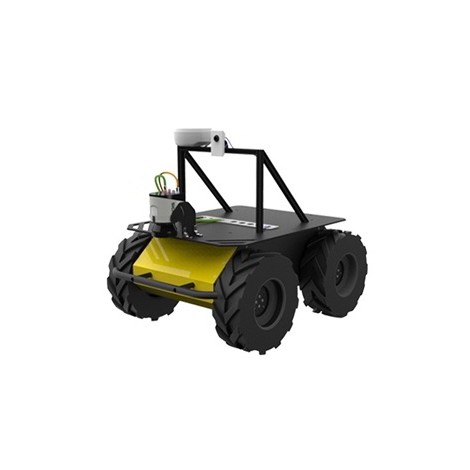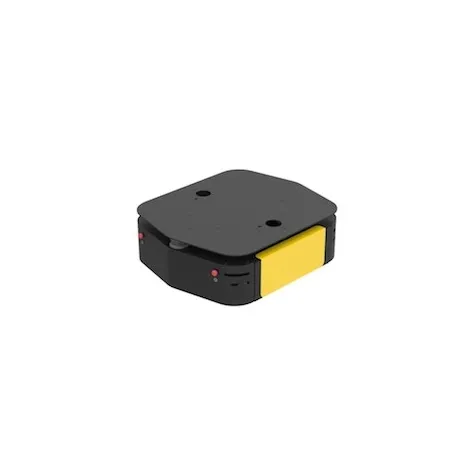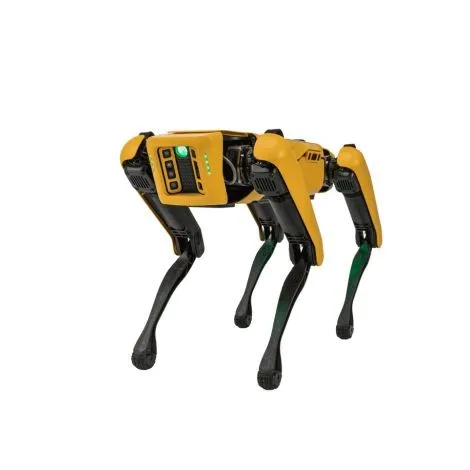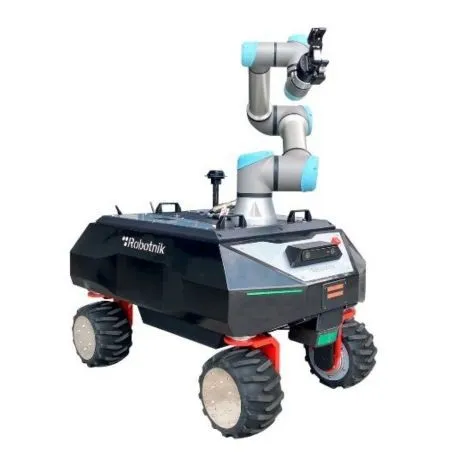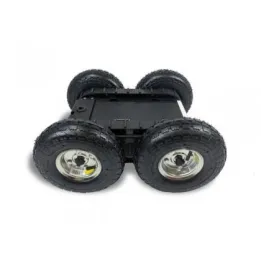Mobile robots
Mobile robotics can be a real game changer in many projects. Mobile robots are powerful tools, which autonomy can take over from humans strenuous or dangerous tasks.
What is an autonomous mobile robot?
An autonomous mobile robot is a robot that can move around in an open or closed space. It does not remain stationary in one position. The autonomous mobile robot can map its environment and navigate on its own, without being controlled by an operator.
Autonomous mobile robots do not need any external relays to operate (such as beacons). Instead, they use SLAM (Simultaneous Localization And Mapping) technology, which enables them to build a map of their environment in real time, and do some self-localization. If needed, autonomous mobile robots can also be remotely operated.
Usually, an autonomous mobile robot is made up of:
- A chassis (with motors and controller)
- An embedded computer
- A battery
- Sensors (at least a LiDAR)
- Actuators
The sensors and actuators will change depending on the tasks the robot has to perform.
Types of sensors:
- Thermal sensor
- Panoramic camera
- Gas sensor
- Motion sensor
- Microphone
- Etc
Type of actuators:
- Robotic arm
- Screen
- Speakers
- Drone
- Etc
Mobile robots: missions and applications
In which situations can mobile robotics be a real advantage? We won't list the many tasks a robot can take over from humans, there are too many. We will list the one we are familiar with at Génération Robots. For example, for inspection tasks in hazardous environments, mobile robots are essential for ensuring safety and efficiency.
Missions where a robot can be essential, or mandatory:
- Nuclear dismantling
- Space exploration (rovers, sample collection, etc)
- Heavy equipment transport (construction sites, rescue missions, scientific missions, etc.)
- Transport of mail, medication, light equipment, within a single building, a complex or a district
- Robotised cowshed cleaning
- Surveillance and preventive maintenance of sensitive sites (SEVESO sites, airports, oil & gas)
- Etc
How to choose the right mobile robot for your project?
The environment and the terrain are both major considerations, as they cannot be easily changed.
Depending on the environment and the terrain on which the robot will drive, as well as its missions, the locomotion will be different:
- Mecanum wheels ➡ allows lateral movements, suitable for warehouses and indoor navigation (Clearpath Robotics' Dingo robot type)
- All-terrain wheels ➡ for outdoor navigation, suitable for exploration missions, agriculture, etc (RR100 robot type from Generation Robots)
- Tracked ➡ outdoor navigation, on uneven terrain (potholes, small ditches, rocks, steps, etc) (Bunker Pro robot type)
- 4 legs ➡ allows robots to move on stairs or rocks (Spot robot type). Some hybrid models, such as the B2 from Unitree Robotics, have wheels at the end of their legs.
You will also need to consider the following features:
- The payload (does the robot need to carry heavy equipment?)
- Autonomy (an important factor in surveillance and security missions)
- Agility (speed and turning radius)
- The budget allocated to the project
Other factors, such as the possibility to quickly add extra addons, can also be important. Agilex mobile robots are equipped with rails that allow for quick customization.
Finally, ROS/ROS 2 compatibility is often a major factor in the choice of a mobile base, especially for research and R&D centers. All our mobile robots are ROS compatible.
This 100% ROS four-wheel drive mobile base is an outdoor pro. Use this durable Rover to carry heavy loads on any terrain.

